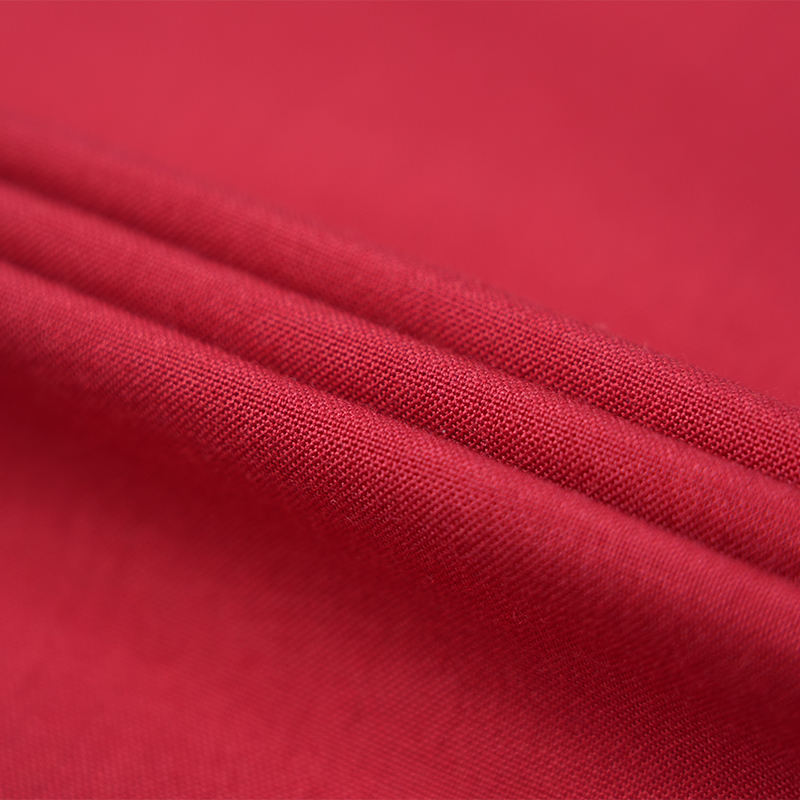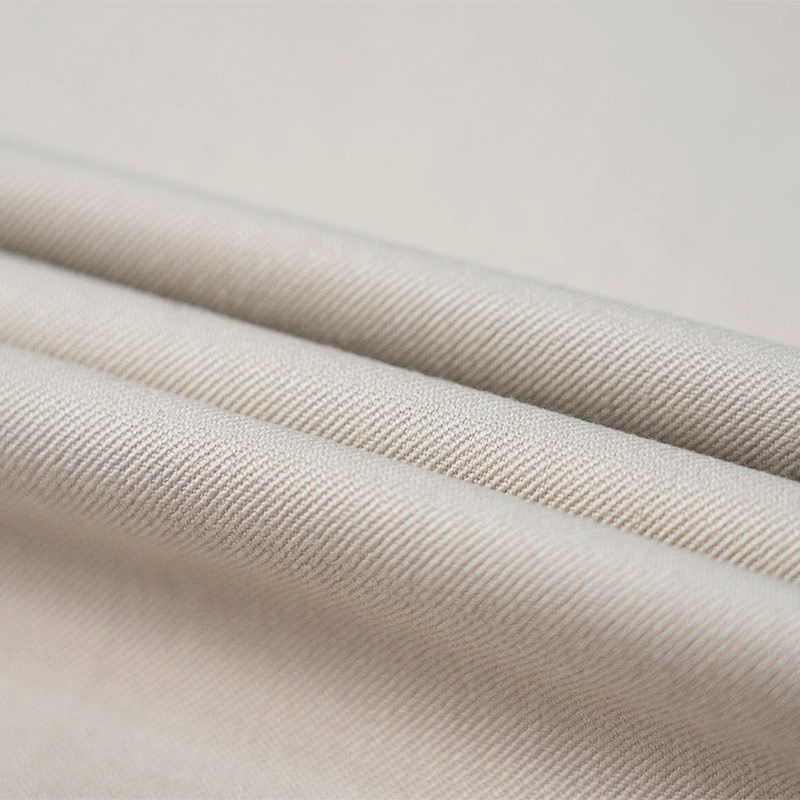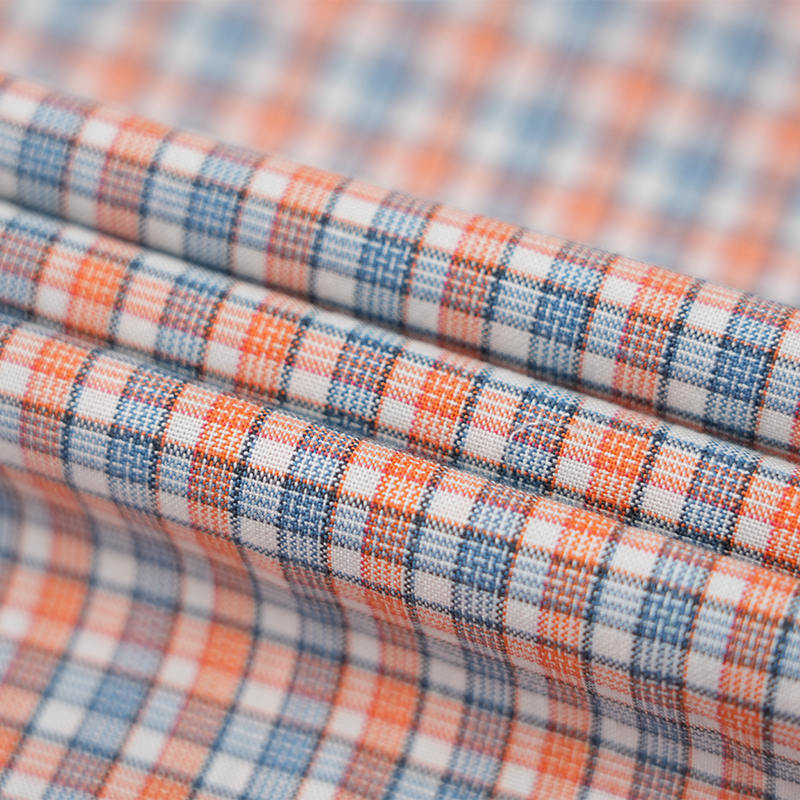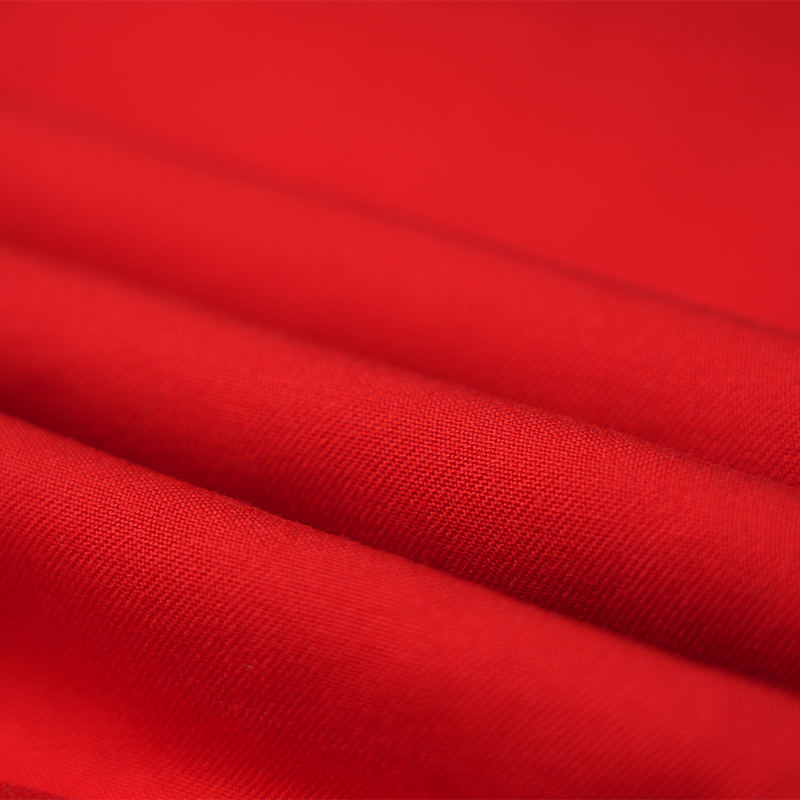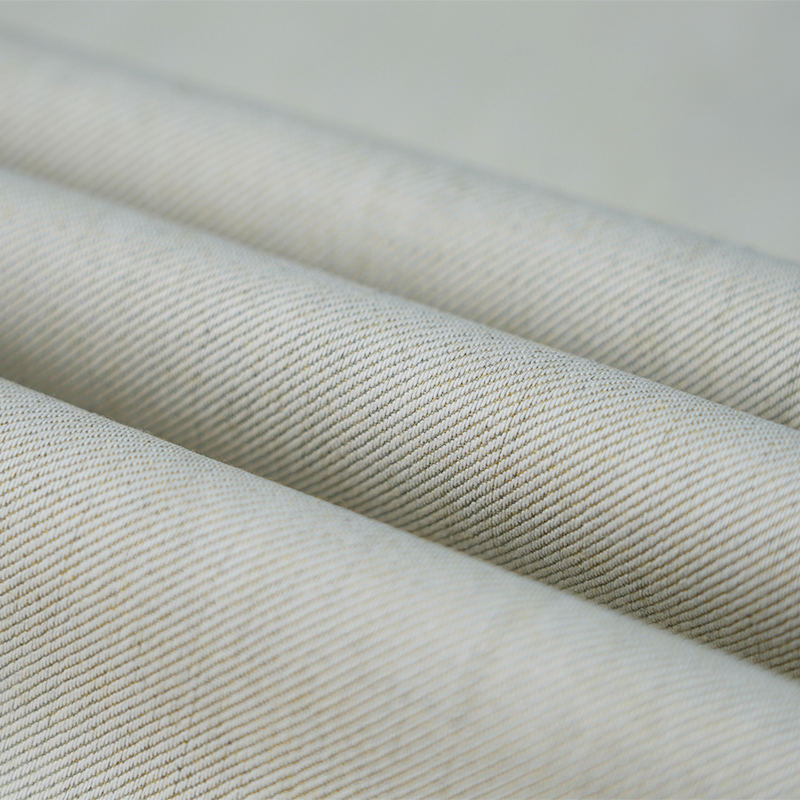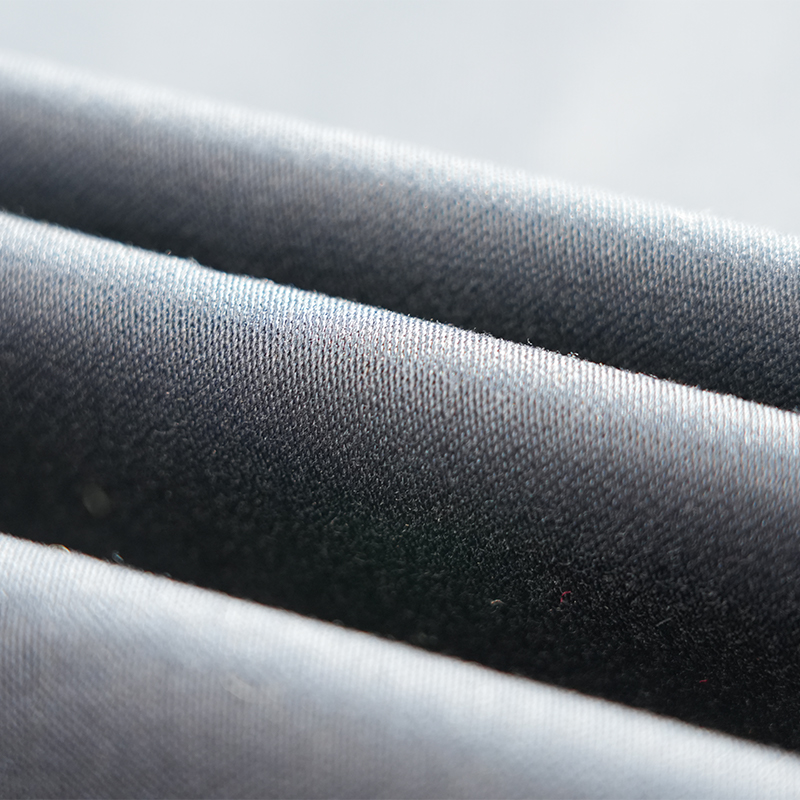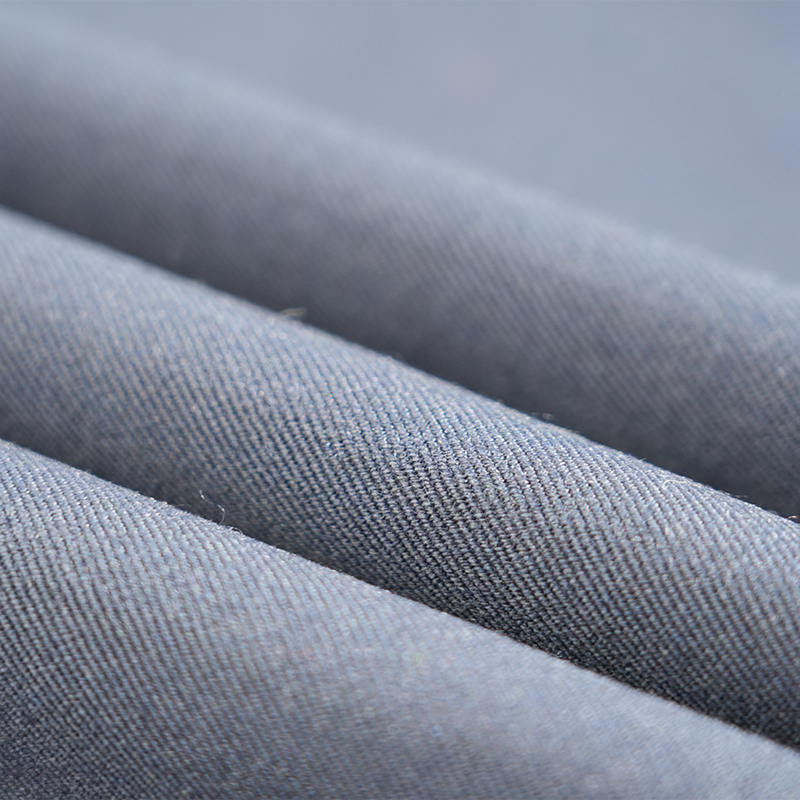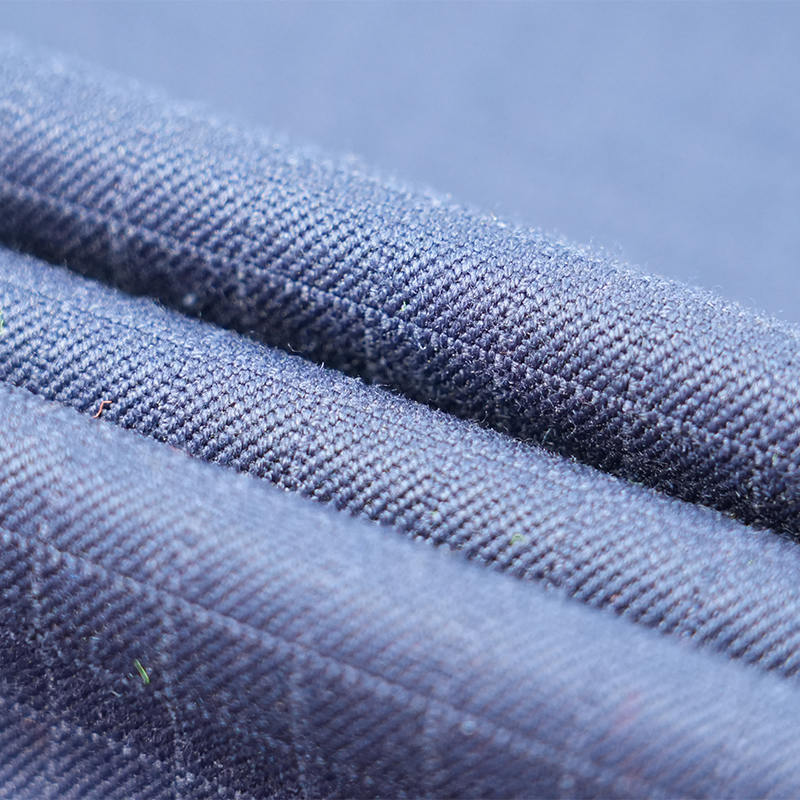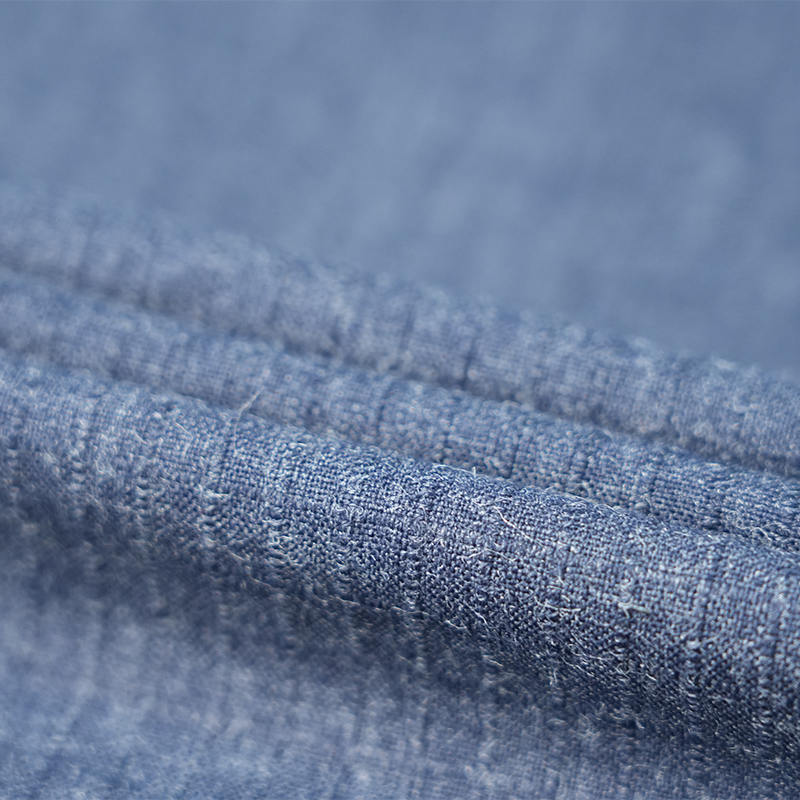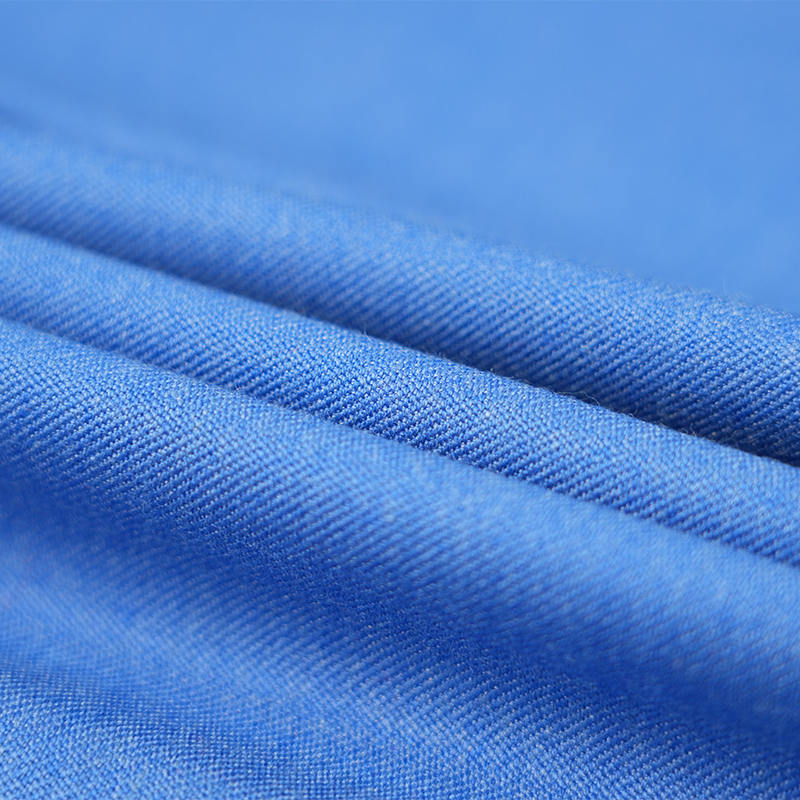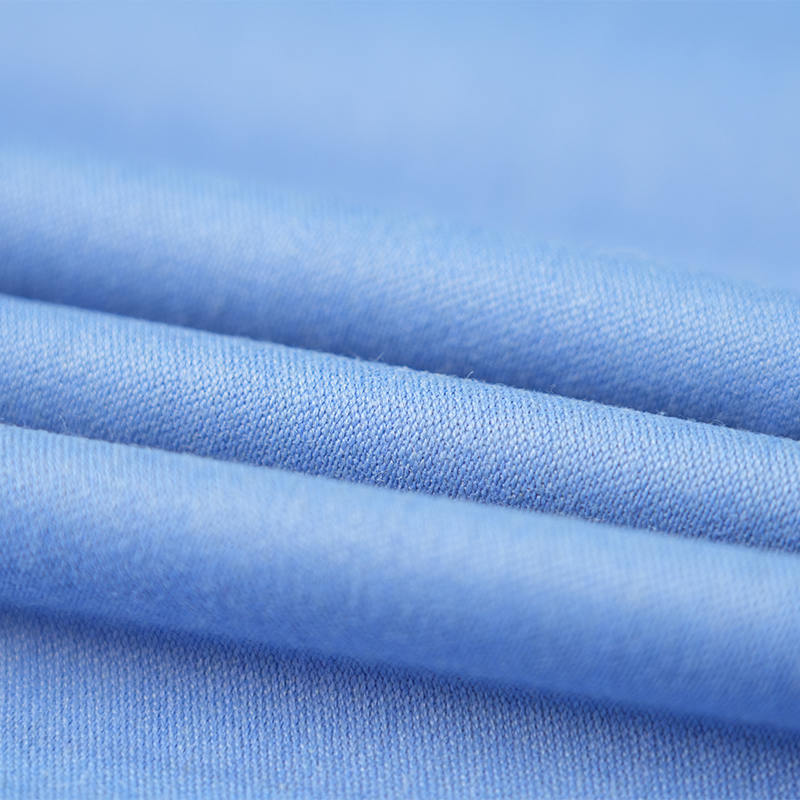Content
- 1 1. The principle of achieving high temperature resistance
- 2 2. Technology to enhance tear resistance
- 3 3. The role of fire rescue protective fabrics
- 4 4. The role of firefighting and rescue protective fabrics in high temperature environments
- 5 5. Why are ordinary clothes fatal when exposed to fire, while fire suits can protect lives?
- 6 6. Post-maintenance and storage of fire rescue protective fabrics
- 7 7. Frequently Asked Questions (FAQ) about Fire and Rescue Protective Fabrics
1. The principle of achieving high temperature resistance
At the fire scene, firefighters face multiple threats:
High temperature thermal radiation: the temperature of an open fire can reach 600-1000℃
Risk of mechanical damage: building collapse, sharp objects hooking, etc.
Chemical corrosion: acid and alkali substances leaked from chemical plants
Heat and humidity stress: increased core body temperature leads to heat exhaustion
Traditional cotton protective clothing will quickly carbonize at high temperatures, while ordinary synthetic fibers (such as polyester) will melt in fire and cause severe burns. Modern firefighting and rescue fabrics must meet the following requirements:
High temperature resistance: withstand high temperatures above 800℃ for a short time
Tear resistance: resist impact and friction from sharp objects
Lightweight: the weight of the whole set of clothing is ≤15kg
Breathability: allow sweat to evaporate and dissipate heat
Material selection: from aramid to nanocomposites
The high temperature resistance of firefighting and rescue fabrics mainly depends on the selection and combination of special fiber materials:
Aramid fiber (Nomex®): can be used for a long time at 200℃, withstand high temperatures of 500℃ for a short time, and form a carbonized layer to isolate heat when burning
Polybenzimidazole (PBI): extreme temperature reaches 600℃, oxygen index (LOI) is as high as 38%, and does not melt when burning
Polyphenylene sulfide (PPS) fiber: strong chemical corrosion resistance, suitable for chemical plant rescue scenes
Domestic aromatic sulfone fiber: independently developed in China, with temperature resistance comparable to Nomex but lower cost
The latest technology adds carbon nanotubes or graphene to the fiber matrix to improve thermal stability.
Multi-layer protective structure design
Typical fire suits use a three-layer composite structure:
Outer layer: flame-retardant fabric (such as NomexⅢA), which has passed the strict test of damage length ≤2cm and afterburning time ≤1s
Middle layer: waterproof and breathable membrane (such as PTFE) + thermal insulation layer (aluminum foil reflects heat radiation)
Inner layer: comfort layer (moisture wicking fiber), some high-end models integrate phase change materials to regulate microclimate
This design can simultaneously block conductive heat (insulation layer), radiant heat (aluminum foil layer) and convective heat (airtight structure)
Multi-layer protective structure design
Typical fire suits use a three-layer composite structure:
Outer layer (exposed layer):
Material: No mexⅢA (93% aramid + 5% antistatic fiber + 2% conductive fiber)
Function: flame retardant, antistatic, wear resistant
Thickness: 0.5-0.7mm
Middle layer (insulation layer):
Waterproof breathable membrane: expanded polytetrafluoroethylene (ePTFE), pore size 0.2-0.5μm
Insulation material: aluminum foil reflective layer (reflectivity ≥85%) + aramid needle felt
Thermal resistance: ≥0.15m²·K/W
Inner layer (comfort layer):
Material: flame retardant viscose fiber (LOI ≥28%) + Coolmax® moisture-conducting fiber
Function: moisture absorption and perspiration (moisture permeability ≥5000g/m²/24h)
2. Technology to enhance tear resistance
Application of high-strength fibers
(1) Para-aramid (Kevlar®)
Tensile strength: 3GPa (5 times that of steel)
Application areas: elbows, knees and other areas prone to wear
Blending ratio: usually blended with Nomex at a ratio of 15-30%
(2) Ultra-high molecular weight polyethylene (UHMWPE)
Features:
Specific strength: 35cN/dtex (1.5 times that of aramid)
Density: 0.97g/cm³ (lighter than water)
(3) Polyimide (PI) fiber
Tear strength: ≥50N
Heat resistance: 400℃ for long-term use
Fabric structure innovation
(1) Three-dimensional weaving
Adopting corner interlocking structure:
Warp density: ≥60 yarns/cm
Weft density: ≥40 yarns/cm
Advantages:
Isotropic tear resistance (warp and weft strength difference ≤15%)
(2) Local reinforcement design
Key parts (such as shoulders) adopt "sandwich" structure:
Outer layer: 500D high-strength nylon Oxford cloth
Middle: 0.3mm thick polyurethane foam
Inner layer: Aramid woven fabric
The tear resistance of fire rescue protective fabrics
In the extreme environment of firefighting and rescue, the tear resistance of protective fabrics is directly related to the life safety of firefighters. When buildings collapse, metal fragments fly or sharp objects are hooked, ordinary fabrics may break and fail in an instant, while professional tear-resistant protective fabrics can remain intact and provide continuous protection for rescuers. This ability is not accidental, but a precise combination of material science and textile technology.
The realization of tear resistance begins with the selection of special fibers. High-strength synthetic fibers use special molecular arrangements to make the tensile strength of a single fiber several times that of steel wire. These fibers do not exist in isolation, but form a three-dimensional network structure through multi-axial weaving technology. When external force acts on the fabric, the stress will quickly disperse along the warp and weft directions and the fibers interwoven at multiple angles to avoid tearing and expansion caused by local concentrated force. This structure is similar to the mechanical principle of a spider web. Even if some fibers break, the overall structure can remain stable.
In practical applications, tear resistance is often further improved by strengthening the design of key parts. The garment's vulnerable areas, such as elbows, knees and shoulders, are made of a multi-layer composite structure. The outer layer is a high-density wear-resistant fabric, the middle layer is implanted with a tough film, and the inner layer remains soft and comfortable. When a sharp object hits, the layers of material work together: the outer layer resists initial puncture, the middle layer absorbs energy through elastic deformation, and the inner layer prevents fragments from hurting the skin. This layered protection concept draws on the design ideas of bulletproof vests, but focuses more on the resolution of multi-directional forces.
Tear resistance in dynamic environments is particularly important. Firefighters often need to climb, crawl or carry weight during rescue operations, and the fabric will be subjected to complex and variable stresses. Through computer simulation of thousands of motion states, engineers optimized the twist of the fiber and the organizational structure of the fabric, so that the fabric can maintain stable performance under various mechanical effects such as stretching, twisting, and friction. The special seaming process turns the weaknesses of traditional sutures into advantages, using laser welding or high-strength gluing technology to ensure that the strength of the seams is even higher than the fabric itself.
The ultimate test of tear resistance is reliability under extreme conditions. In a high temperature environment, ordinary materials will deteriorate rapidly, while the heat-resistant fibers in fire protection fabrics can maintain more than 80% of their original strength at over 300°C. This thermal stability stems from the special structure of the fiber molecular chain, which will not unzip or soften at high temperatures. At the same time, the tear resistance of the fabric will not be significantly reduced due to water immersion, oil pollution or repeated washing. This is a lasting protection achieved through molecular-level surface modification.
From the microscopic molecular structure to the macroscopic clothing design, every detail of the tear resistance performance embodies engineering wisdom. When firefighters cross dangerous areas, this seemingly ordinary layer of cloth is silently completing the miracle of mechanics-achieving the strongest protection with the lightest weight, allowing rescuers to move forward fearlessly in the harshest environment. This protection is not only a physical barrier, but also a solemn commitment to life, reflecting the best interpretation of science and technology for humanistic care.
3. The role of fire rescue protective fabrics
Basic protective role
- Resist high temperature heat damage
(1) Thermal radiation protection
Mechanism of action: Reflect more than 90% of radiant heat through the aramid fiber carbonization layer (Nomex® forms an expanded carbon layer at 400℃)
Performance indicators:
Thermal protection performance (TPP) ≥35cal/cm² (NFPA 1971 standard)
Under direct 800℃ flame, the temperature rise of the inner layer is controlled within 24℃ (GB 24540 standard)
(2) Contact heat barrier
Adopt multi-layer structure design:
Outer layer: 0.5mm thick flame retardant fabric (such as PBI fiber)
Middle layer: 2mm aerogel insulation felt (thermal conductivity ≤0.02W/m·K)
Inner layer: Phase change material (PCM) to adjust microclimate
- Prevent mechanical damage
(1) Tear-resistant protection
UHMWPE fiber reinforcement is used in key parts (elbows and knees):
Trapezoidal tear strength ≥45N (ordinary fabrics are only 15-20N)
Dynamic puncture resistance reaches 120N (3.5kg cone drop hammer test)
(2) Anti-cut design
Special weaving process:
Three-dimensional angle interlocking structure makes the yarn slip rate ≤5%
Chemical and biological protection
- Chemical corrosion protection
(1) Acid and alkali resistance
Special fabric for chemical protective clothing:
PPS fiber outer layer: resistant to 98% sulfuric acid corrosion for 8 hours
PTFE membrane middle layer: pore size 0.2μm to block liquid chemicals
(2) Anti-molten metal
Surface treatment technology:
Ceramic coating (Al₂O₃-SiO₂ system) makes the molten aluminum slide time ≤2 seconds
- Isolation of biological contamination
Application in epidemic relief scenarios:
ePTFE membrane (expanded polytetrafluoroethylene) virus blocking efficiency ≥ 99.9%
Silver ion antibacterial treatment (antibacterial rate ≥ 90%, GB/T 20944.3 standard)
Maintenance of physiological functions
- Heat and moisture management
(1) Sweat drainage
Inner layer structure innovation:
Coolmax® moisture-conducting fiber wicking height ≥ 10cm/30min
Unidirectional moisture-conducting design makes moisture permeability ≥ 5000g/m²/24h
(2) Body temperature regulation
Intelligent temperature control technology:
Outlast® phase change material absorbs and releases heat in the range of 28-32℃
- Sports assistance
(1) Joint flexibility
Ergonomic design:
Three-dimensional tailoring of the elbow makes the bending resistance ≤ 15N (ordinary fabric ≥ 30N)
- Weight control
Lightweight material combination:
|
Material type |
Surface density (g/m²) |
Application area |
|
Aramid honeycomb fabric |
180 |
Trunk main protection area |
|
UHMWPE mesh |
120 |
Limb activity area |
The specific role of fire rescue protective fabrics
In the raging fire and billowing smoke, fire rescue protective fabrics are like a second layer of skin, silently guarding the lives of firefighters. This special material combines cutting-edge technology with precision technology to build an invisible life defense line, allowing retrogrades to get the greatest degree of protection in the most dangerous environment.
High temperature flames are the most direct threat in the fire scene, and the primary mission of protective fabrics is to resist heat damage. When the ambient temperature rises sharply to 800℃, the special fiber will immediately activate the protection mechanism, form a heat insulation barrier through surface carbonization, and control the inner layer temperature within the human body's tolerance range. This self-protection ability stems from the careful design of the material's molecular structure. At high temperatures, the fiber will not melt and drip, but form a uniform carbonization layer, which not only blocks heat transfer, but also maintains the integrity of the clothing. At the same time, the nano-scale pores inside the fabric form a stable air insulation layer, further slowing down the speed of heat conduction and buying precious time for rescue.
In the face of complex rescue environments, protective fabrics must also have all-round mechanical protection properties. At the site of building collapse, sharp steel bars and concrete fragments can cause serious injuries. Through special fiber blending and three-dimensional weaving technology, the fabric has amazing tear resistance while maintaining lightness, and can maintain basic protection functions even if it is hooked by sharp objects. Multi-density weaving technology is used in vulnerable parts such as joints to ensure flexibility of movement and protection strength in key areas. This balance is achieved through thousands of simulation tests, and every stitch and every seam is strictly verified.
Chemical protection is another important function. At the scene of a chemical plant accident, corrosive liquids and toxic gases may be more dangerous than flames. Protective fabrics use a dual mechanism of microporous barrier and molecular filtration to prevent harmful substances from penetrating and allow sweat to evaporate. Special surface treatment technology prevents dangerous liquids from soaking the fabric, but instead forms beads and rolls off, greatly reducing the risk of chemical damage. This intelligent protection feature comes from the precise regulation of the surface energy of the material, building a selective barrier at the nanoscale.
The heat and moisture balance system is a function that is easily overlooked but crucial. During high-intensity rescue, the core body temperature of firefighters may quickly rise to dangerous levels. Protective fabrics use unique fiber cross-section design and hierarchical structure to establish efficient heat transfer channels and quickly conduct heat from the body surface. The capillary effect of the inner layer continuously absorbs sweat from the skin surface, and dissipates heat through evaporation in the outer layer, forming a dynamically regulated microclimate system. This bionic design draws on the working principle of human skin to achieve the unity of protection and comfort.
In a smoke-filled fire scene, visual protection is also a matter of life and death. Specially treated fluorescent materials automatically enhance the reflective effect in a dark environment to ensure that rescuers can see each other. This optical property is not a simple addition of reflective strips, but the optical crystals are woven into the fiber to achieve 360-degree visual protection without dead angles. At the same time, the color of the fabric has been strictly tested to ensure that it can be quickly identified under different lighting conditions.
4. The role of firefighting and rescue protective fabrics in high temperature environments
- High temperature heat damage protection
Protective fabrics form a thermal barrier system through special fibers and composite structure design. Fibers such as aramid (Nomex®) and polybenzimidazole (PBI) will carbonize at high temperatures of 400-600℃ to form an insulation layer, controlling the temperature of the inner layer within 24℃ (GB 24540 standard). In the multi-layer structure, the outer layer reflects thermal radiation (such as aluminum-plated materials reflect more than 85% of radiant heat), the aerogel or aramid needle felt in the middle layer delays heat conduction through low thermal conductivity (≤0.02W/m·K), and the phase change material (PCM) in the inner layer adjusts the microclimate to form a gradient protection. For extreme environments above 1000℃, new materials such as carbon fiber fireproof cloth can achieve short-term protection through the fire zone through microporous structure and ceramic coating.
- Mechanical integrity guarantee
Tear resistance is achieved through high-strength fiber blending, such as para-aramid (Kevlar®) and ultra-high molecular weight polyethylene (UHMWPE) with a warp and weft tear strength of ≥32N (NFPA 1971 standard). Three-dimensional weaving technology disperses stress, and the overall structure can be kept stable even if some fibers are broken. Multi-layer composite reinforcement is used for vulnerable parts such as joints, such as the combination of outer layer 500D Oxford cloth + middle polyurethane foam + inner layer aramid woven fabric, so that the dynamic tear extension length is controlled within 12mm (38mm for ordinary fabrics).
- Chemical and biological hazard isolation
In chemical rescue scenarios, polyphenylene sulfide (PPS) fiber can resist 98% sulfuric acid corrosion for 8 hours, while PTFE microporous membrane (pore size 0.2μm) can block liquid chemical penetration. For biological hazards, the composite fabric of ePTFE membrane and silver ion treatment has a virus blocking rate of ≥99.9% while maintaining antibacterial properties.
- Physiological function maintenance
Thermal and moisture management is achieved through fiber cross-section design and hierarchical structure. The wicking height of Coolmax® moisture-conducting fibers is ≥10cm/30min, and the moisture permeability is 5000g/m²/24h, while Outlast® phase change materials absorb and release heat in the range of 28-32℃, reducing core body temperature fluctuations. The lightweight design makes the weight of the entire garment ≤10kg, and the elastic seams (elongation ≥150%) ensure flexibility in movement.

5. Why are ordinary clothes fatal when exposed to fire, while fire suits can protect lives?
At the scene of a fire, the protective effects of ordinary clothes and fire suits are completely different - the former may burn out in a few seconds, causing serious burns or even death to the wearer; the latter can withstand temperatures of thousands of degrees and protect firefighters from evacuation safely. This difference is not accidental, but the result of the combined effect of material science, structural design and protection mechanism.
Ordinary clothes: fatal flaws under high temperatures
Ordinary clothes are usually made of cotton, polyester or blended materials, and the performance of these materials in high temperature environments is worrying. Although cotton clothes are moisture-absorbent and breathable, they will burn quickly when exposed to fire and continue to smolder. What's worse, a large amount of heat and toxic gases such as carbon monoxide are released during the combustion process. Experimental data show that a cotton T-shirt will completely burn in just 3 seconds in an 800℃ flame, causing third-degree burns to the wearer.
Synthetic fibers such as polyester are even more dangerous. These materials will not burn like cotton at high temperatures, but will melt into liquid and adhere to the skin surface to cause deep burns. The molten synthetic fibers will be tightly bonded to the skin and difficult to remove during medical treatment, which greatly increases the difficulty of treatment. In addition, toxic gases such as hydrogen cyanide released during the combustion process can cause poisoning or suffocation, becoming one of the important causes of death in fires.
Firefighting suits: multi-layered technological armor
Professional firefighting suits completely subvert the fatal flaws of ordinary clothing through multi-layered technological protection. Its protective secrets are mainly reflected in three aspects:
Special flame-retardant fibers
Firefighting suits use special fibers such as aramid (such as Nomex®) and polybenzimidazole (PBI). These materials have extremely high limiting oxygen indexes (LOI ≥ 28%) and will not burn at high temperatures, but will form a heat-insulating barrier through carbonization. When the temperature reaches 400°C, the aramid fiber will expand and carbonize to form a stable heat-insulating carbonized layer, which effectively blocks the transfer of heat to the inside.
Intelligent multi-layer structure
A standard fire suit usually consists of three layers: the outer layer is made of high-strength aramid fabric, which can reflect most of the radiant heat; the middle layer is a waterproof and heat-insulating aluminum foil composite layer; the inner layer is a comfortable and breathable flame-retardant material. This structural design ensures that the temperature of the inner layer does not rise by more than 24°C after 10 seconds of 800°C flames, which buys firefighters valuable rescue time.
Dynamic protection system
Modern fire suits also integrate intelligent protection functions. Thermochromic fibers can automatically change color to warn of danger when exceeding 300°C; built-in sensors can monitor carbon monoxide concentrations and the wearer's body temperature in real time; some high-end models are even equipped with self-repair functions, which can automatically repair tiny cracks when the fabric is damaged.
The ultimate test in extreme environments
The protective performance of fire suits has withstood severe tests in various extreme environments. During chemical plant rescue operations, special coatings can resist the splash of 1600°C molten metal; during forest fires, lightweight designs (≤10kg) ensure the mobility of firefighters for long periods of time; at gas leak sites, nano-scale microporous membranes can effectively block the penetration of harmful chemicals.
Core difference comparison table:
|
Comparison items |
Ordinary clothing |
Fire suits |
|
Main materials |
Cotton, polyester, blended fabrics |
Aramid (Nomex®), polybenzimidazole (PBI), carbon fiber |
|
Reaction to fire |
Burn or melt, release toxic gas |
Carbonization forms an insulation layer, no melting drop |
|
Limiting oxygen index |
Cotton (LOI≈18%), polyester (LOI≈20%) |
≥28% (flame retardant) |
|
Thermal insulation performance |
No insulation layer, direct heat conduction |
Multi-layer structure, 800℃ flame 10 seconds inner layer temperature rise ≤24℃ |
|
Tear resistance |
Easy to break (trapezoidal tear ≤ 10N) |
≥ 45N (reinforced key parts) |
|
Toxic gas protection |
Combustion produces deadly gases such as CO and HCN |
Flame-retardant fibers do not release toxic gases, and some models have integrated filter layers |
|
Weight |
Light (0.2-0.5kg) |
Heavier (10-15kg), but distributed design optimizes load-bearing |
6. Post-maintenance and storage of fire rescue protective fabrics
Key points of daily maintenance
Immediate treatment after use
Contaminant removal: After fire rescue, oil, chemical residues or ash on the surface of the fabric must be removed within 30 minutes. Delayed treatment will lead to:
Acidic substances corrode the fiber (such as the residue with a pH value of less than 4 after chemical plant rescue, which can reduce the strength of aramid by 15% within 48 hours)
Carbon particles are embedded in the gaps of the fabric, reducing air permeability
Dehydration and drying: Use centrifugal dehydration (≤500 rpm) and then hang to dry to avoid high temperature drying that may cause the waterproof film to peel off. Experiments show that drying above 60°C will reduce the bonding strength of the PTFE membrane by 40%.
Regular performance inspection
- Appearance inspection
|
Defect type |
Inspection method |
Judgment standard |
|
Surface melting |
Observe the fiber end with a magnifying glass |
No molten droplets or carbonized adhesion |
|
Seam cracking |
Apply 5N tensile test |
Seam displacement ≤2mm |
Functional test
Waterproofness: Hydrostatic pressure test according to ISO 811 standard, requirement ≥25kPa (old equipment can be relaxed to 20kPa)
Flame retardancy: Sample 5×20cm cloth strips, 45° tilted combustion test, afterburning time ≤2 seconds
Professional cleaning technology and process
Manual cleaning specifications
Cleaning agent selection:
Neutral detergent (pH 6-8), such as 3M™ Fire Service Wash
Do not use chlorine-containing bleach or softener (will damage the flame retardant coating)
Operation steps:
Pre-soak in 40℃ warm water for 10 minutes (extended to 20 minutes for stubborn stains)
Brush lightly along the grain with a soft brush (pressure ≤0.5kg/cm²)
Rinse with clean water until no foam remains
Special requirements for machine washing
Parameters of industrial washing machines:
|
Item |
Standard value |
|
Speed |
≤400 rpm |
|
Water temperature |
≤40℃ |
|
Washing time |
≤15 minutes |
Loading control:
Do not wash more than 70% of the machine capacity in a single wash (e.g. a 10kg washing machine can only wash 7kg of protective clothing) to avoid friction damage.
Special treatment for decontamination
|
Contaminant type |
Cleaning solution |
Precautions |
|
Oil stains |
White mineral oil pre-coating + enzyme decomposition |
Organic solvents such as gasoline are prohibited |
|
Blood stains |
Hydrogen peroxide (3%) spot treatment |
Action time ≤ 5 minutes |
|
Chemical corrosion |
1% sodium bicarbonate solution neutralization and rinse |
pH value needs to be tested to 6-8 |
Repair and renovation technology
Repairable damage range
Defects allowed to be repaired:
Local wear (area ≤ 3cm²)
Loose thread ends at the seams
Partial detachment of reflective strips
Irreparable damage:
Carbonization area of outer fabric > 10%
Waterproof membrane peeling (hydrostatic pressure < 15kPa)
Professional repair method
Fiber reinforcement technology
Aramid patch fitting:
Cut an aramid fabric piece 2cm larger than the damaged area
Coat with flame-retardant polyurethane glue (such as Bostik 2402)
Hot press curing (120℃/10 minutes, pressure 0.3MPa)
Scientific storage and management specifications for fire rescue protective fabrics
The storage and management of firefighting and rescue protective fabrics is an important part of ensuring the safety of firefighters, and its importance is reflected in every detail. These seemingly ordinary protective equipment actually contain the essence of material science and engineering technology. Only under correct storage and management can they exert the greatest protective effectiveness at the most critical moment. Improper storage environment may lead to irreversible attenuation of fabric performance, and a small management negligence may lead to an irreversible tragedy at a critical moment.
Protective fabrics are extremely sensitive to environmental conditions during storage. Excessive temperature will accelerate fiber aging, excessive humidity will easily breed mold, and strong light exposure will cause molecular chains to break. These seemingly minor environmental factors are subtly affecting the protective performance of fabrics. Experimental data show that the strength of aramid fabrics stored in an environment above 30°C will decay by about 8% per year; and in an environment with a humidity of more than 70%, the growth of mold will reduce the air permeability of the fabric by 30% within three months. These changes may be difficult to detect in daily inspections, but in the high temperature environment of the fire scene, these subtle performance differences may become the dividing line between life and death.
Scientific management methods are also crucial. Protective equipment is not simply "put into the warehouse" and everything will be fine, but a complete life cycle management system needs to be established. From strict inspection at the time of storage to regular turning during storage; from real-time monitoring of temperature and humidity to detailed tracking of usage records, every link requires the careful care of professionals. The practice of a fire brigade shows that after the implementation of scientific management, the average service life of protective clothing has been extended from 3.2 years to 4.5 years, which means that more safety guarantees can be provided for firefighters under the same budget.
In emergency dispatch, the convenience brought by good storage management should not be underestimated. Neatly hung protective clothing can save precious wearing time, a clear identification system can ensure that the required equipment can be found quickly, and a complete maintenance record can avoid the use of protective clothing that has reached its life limit. These seemingly trivial details may become the key factors that determine success or failure at the rescue site where every second counts.
More importantly, standardized storage and management reflect respect for the lives of firefighters. Every carefully maintained protective clothing carries the promise of protection for the retrograde warriors. When firefighters rush into a fire scene without hesitation, the protective gear they wear is the most solid guarantee we can give them. In this sense, the storage and management of protective fabrics is not only a technical job, but also a heavy responsibility.
- Core requirements for storage environment
Temperature and humidity control
Protective fabrics are extremely sensitive to the temperature and humidity of the storage environment. The ideal parameters are:
Temperature: 10-25℃ (above 30℃ will accelerate fiber aging)
Humidity: 40-60%RH (>70%RH is prone to mold growth)
Light protection: UV intensity ≤50μW/cm² (strong light causes aramid molecular chains to break, and the annual strength decay rate reaches 8%)
Special areas need to pay attention to:
Coastal/high humidity areas: equipped with dehumidifiers, humidity fluctuations controlled at ±5%RH
Northern dry areas: static electricity accumulation should be prevented in winter, and the relative humidity should not be lower than 30%
Ventilation and air purification
Ventilation standard: air exchange volume ≥6 times per hour to avoid accumulation of volatile chemicals in confined spaces
Air filtration: It is recommended to use HEPA filters (PM2.5 filtration efficiency ≥99.97%) to prevent dust from adsorbing fibers
Isolation of hazardous sources
Chemical corrosives: need to be stored separately from acids, alkalis, oxidants, etc., with a minimum safe distance of 5 meters
Fire source management: the warehouse must be equipped with an automatic gas fire extinguishing system (water-based fire extinguishing agents are prohibited)
- Packaging and storage methods
Selection of packaging materials
|
Packaging type |
Applicable scenarios |
Advantages and disadvantages |
|
Breathable dust cover (Tyvek®) |
Long-term storage |
Dust-proof and moisture-permeable, but the cost is relatively high |
|
Vacuum sealed bag |
Backup equipment (storage for more than 3 years) |
Space-saving, but may damage the fiber |
|
Plastic film packaging |
Short-term turnover (<6 months) |
Economical, need to check the sealing regularly |
- Comparison of storage methods
Hanging storage:
Use wide-shoulder hangers (width ≥ 40cm) to avoid shoulder deformation
Suitable for frequently used equipment, saving time before wearing
Flat storage:
Number of layers ≤ 5, separated by corrugated cardboard
Suitable for large-scale spare inventory, but needs to be turned over monthly to prevent creases
Taboo:
No folding and stacking (will produce permanent creases and cause fiber breakage)
No direct contact with the ground (shelves must be ≥ 20cm above the ground)
Maintenance storage measures
- Pretreatment procedures
Cleaning requirements:
Complete cleaning within 48 hours after use (neutral detergent pH 6-8)
Pre-coat stubborn stains with white mineral oil + enzyme preparations (gasoline is prohibited)
Drying process:
Centrifugal dehydration (≤500 rpm) and then shade drying
Drying temperature ≤60℃ (to avoid PTFE membrane peeling)
- Application of maintenance materials
Fiber protector: Silicone-based spray (once a month to enhance flexibility)
Metal parts maintenance: Silicone grease lubricates zippers to prevent adhesion and aging
Anti-mildew treatment: Nano-silver coating (must-have in humid areas)
Strategies for special scenarios
- Management in high humidity seasons (rainy season/typhoon season)
Dehumidification plan:
Place calcium chloride desiccant (500g per square meter) in the warehouse
Turn on the dehumidifier (average daily moisture reduction ≥5L)
Emergency inspection:
Monitor fabric moisture content daily (>8% requires immediate intervention)
Mold treatment: 75% alcohol wipe + ultraviolet irradiation for 30 minutes
- Long-term storage equipment
Inert gas protection: nitrogen replacement packaging (oxygen content <3%)
Status monitoring:
Built-in temperature and humidity recorder (data storage ≥3 years)
Performance sampling once a year (even if not in use)
Common misunderstandings and corrections
Myth: Sunlight exposure can sterilize
Fact: Ultraviolet rays will cause aramid strength to decay by 8% per year, and UV-C lamps should be used for sealed disinfection
Myth: Inventory equipment does not require maintenance
Fact: Unused protective clothing still needs at least one performance test per year (natural aging of materials)
Myth: Plastic bag sealing is the safest
Fact: Airtight packaging is prone to moisture accumulation, Tyvek® dust cover is recommended

7. Frequently Asked Questions (FAQ) about Fire and Rescue Protective Fabrics
- What is the difference between flame retardant fabrics and fire-resistant fabrics?
Flame retardant fabrics (Fire Retardant): Flame retardant properties are obtained through chemical post-treatment (such as phosphorus and nitrogen flame retardants). Excessive washing may reduce the effect.
Fire resistant fabrics (Fire Resistant): Made of intrinsic flame retardant fibers (such as aramid, PBI), they are highly washable, with a LOI value of ≥28%, and only carbonize without melting at high temperatures.
- How high a temperature can a fire suit withstand?
Conventional fire suits: The outer aramid/PBI fabric can withstand 500-600℃ for a short time, and the temperature rise of the inner layer is controlled within 24℃ (GB 24540 standard).
Fire-avoiding suits: Multi-layer composite structures (including carbon fiber and aluminum foil) can withstand flames of 1000-3000℃, and can provide continuous protection for 10 minutes without the cover of a water gun.
- How often do fire suits need to be cleaned? How to clean them correctly?
Frequency: Wash within 48 hours after each use in a fire scene to avoid contaminants corroding the fiber.
Method:
Neutral detergent (pH 6-8), hand wash or machine wash at water temperature below 40℃ (speed ≤400 rpm).
Bleach and softener are prohibited to avoid damaging the flame retardant coating.
- What are the requirements for the storage conditions of firefighting clothing?
Environment: temperature 10-25℃, humidity 40-60%RH, light-proof and UV protection (intensity ≤50μW/cm²).
Method: Hanging storage (hanger width ≥40cm) or flat (number of layers ≤5 layers) to avoid folding and causing fiber breakage.
- How to determine whether the firefighting clothing needs to be scrapped?
Key indicators:
Outer layer damage length >2cm or afterburning time >1s (NFPA 1971 standard).
Hydrostatic pressure <15kPa or tear strength <32N.
Appearance inspection: cracked seams, peeling of waterproof membrane or obvious carbonization area> 10%.
- How to balance the comfort of fire suits?
Material selection: Coolmax® moisture-conducting fiber (moisture permeability ≥ 5000g/m²/24h) is used for the inner layer.
Design optimization: breathable mesh under the armpits, three-dimensional tailoring of joints (bending resistance ≤ 15N).
- Can fire suits protect against chemical hazards?
Special chemical protective clothing: The outer layer of PPS fiber is resistant to 98% sulfuric acid for 8 hours, and the PTFE membrane blocks liquid chemicals.
Limitations: Mixed chemicals need to be evaluated separately and cannot simply refer to the data of a single component.

 EN
EN 中文简体
中文简体 English
English русский
русский Español
Español Português
Português عربى
عربى


